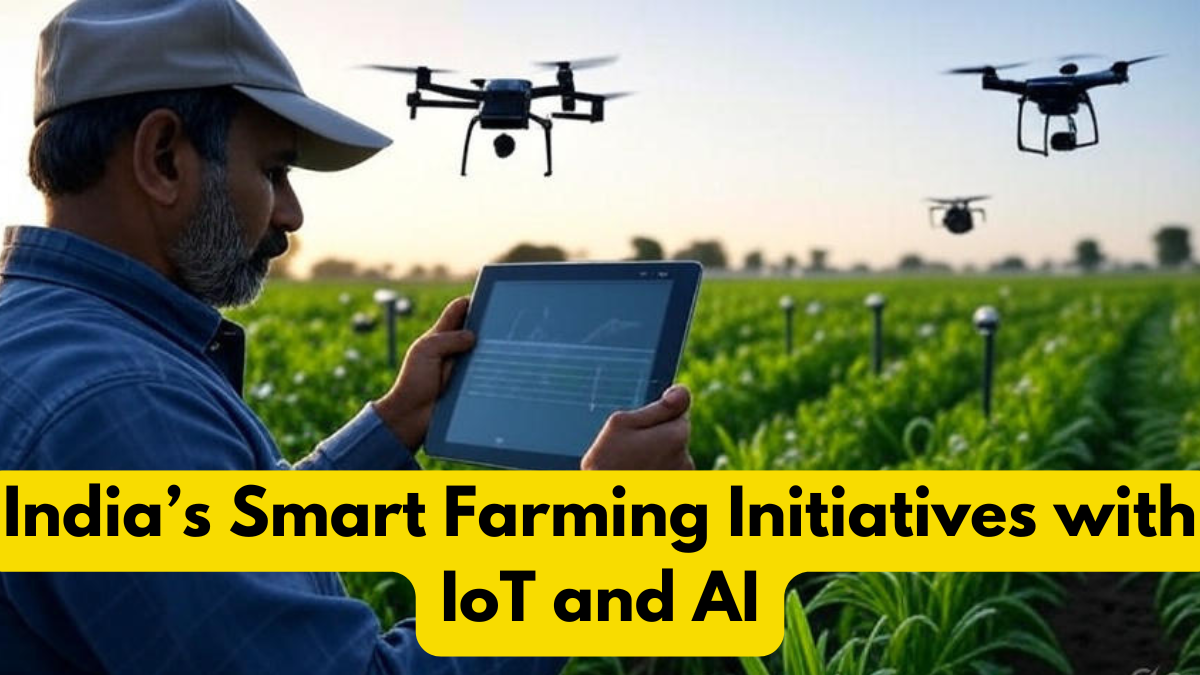The agricultural sector, the backbone of the Indian economy, is undergoing a digital transformation. With rising population demands, climate challenges, and the need for efficient resource management, smart farming India has emerged as a game-changer. By harnessing the power of technologies like IoT (Internet of Things) and Artificial Intelligence (AI), Indian farmers are revolutionizing traditional practices. This wave of AgriTech innovation is not just about improving productivity but also about making farming sustainable, data-driven, and future-ready.

The Rise of Smart Farming in India
In recent years, smart farming India has gained momentum due to the integration of IoT sensors, drones, mobile apps, and AI-powered analytics into agriculture. Farmers can now monitor soil health, weather patterns, and crop growth in real time, which allows them to make informed decisions. This shift reduces wastage of resources, minimizes risks, and boosts yield.
Government initiatives, start-up ecosystems, and private sector investments have also fueled this movement. With the rapid adoption of AgriTech innovation, farming is transitioning from intuition-based decisions to precision agriculture.
Role of IoT and AI in Agriculture
The success of smart farming India relies heavily on the practical use of IoT and AI tools. IoT devices such as soil sensors, climate monitors, and GPS-based equipment provide accurate, real-time data. AI algorithms analyze this data to give farmers actionable insights, such as when to sow seeds, irrigate, or harvest.
Applications of AgriTech innovation include:
- IoT-enabled irrigation systems that optimize water use
- Drones for crop monitoring and pesticide spraying
- AI-based disease detection in plants
- Predictive analytics for weather forecasting
- Blockchain for supply chain transparency
These innovations help farmers cut costs, enhance productivity, and improve resilience against unpredictable environmental challenges.
Table: Impact of IoT and AI on Smart Farming
| Technology | Application in Farming | Impact on Productivity |
|---|---|---|
| IoT Soil Sensors | Real-time soil health monitoring | Reduced fertilizer use, healthier crops |
| AI Algorithms | Predicting yield and disease outbreaks | Lower risks, better planning |
| Drones | Aerial surveillance and spraying | Cost efficiency, faster coverage |
| Smart Irrigation | Automated water management | Water savings up to 30% |
| Blockchain | Transparent supply chain | Better pricing and reduced fraud |
This table highlights how smart farming India benefits from cutting-edge AgriTech innovation that directly improves farmer incomes and sustainability.
Challenges in Adopting Smart Farming
Despite the benefits, several challenges slow the adoption of smart farming India. Many small-scale farmers lack awareness, technical knowledge, and financial resources to invest in advanced technologies. Infrastructure issues like poor internet connectivity in rural areas also create barriers.
Furthermore, while AgriTech innovation offers solutions, scaling these technologies requires strong government support, skill training, and affordable devices. Bridging the gap between technology providers and rural farmers remains a critical step in realizing the full potential of smart farming.
Conclusion
The transformation of agriculture through smart farming India is a testament to how technology can redefine traditional sectors. IoT and AI-driven AgriTech innovation promise improved efficiency, reduced resource wastage, and better resilience against climate challenges. However, for widespread success, collaborations among policymakers, private companies, and farmers are essential. The future of Indian farming lies in embracing technology not as an alternative, but as an integral partner in growth.
FAQs
What is smart farming India?
It refers to the use of IoT, AI, drones, and data-driven tools in agriculture to improve efficiency, productivity, and sustainability.
How does AgriTech innovation help farmers?
AgriTech innovation helps farmers by providing real-time data, predictive analytics, and automation tools that reduce costs and increase crop yield.
What are examples of smart farming technologies?
Examples include IoT soil sensors, smart irrigation systems, drones, AI-based plant disease detection, and blockchain for supply chains.
What challenges limit the growth of smart farming India?
The main challenges include lack of awareness, financial constraints, poor digital infrastructure, and limited access to training.
Click here to know more.